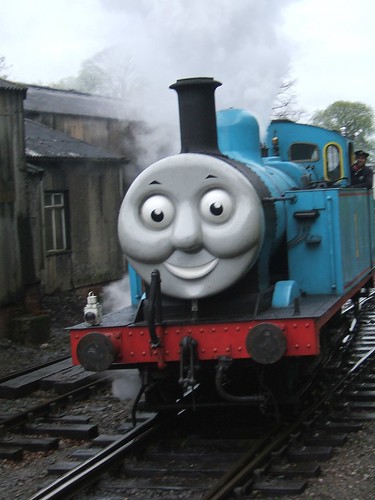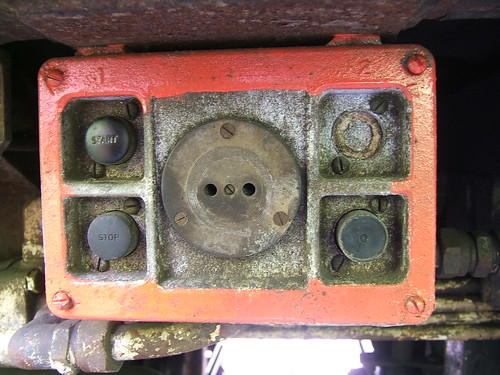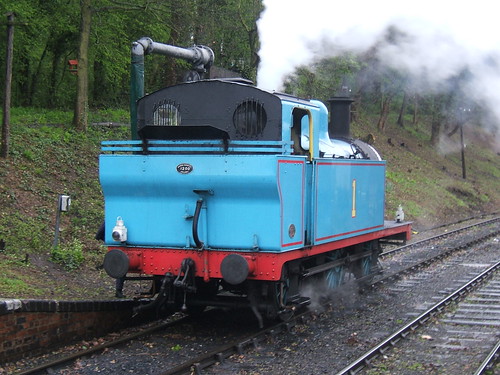Wednesday, 29th February 2012
After an early morning call a little after 5.30 a.m., I was collected at 6.00 a.m. and joined the 'convoy' of guests being collected for breakfast. The sun was just coming up over the swamps overlooked by the eating area. Shortly after 6.30 a.m. I set off on the morning drive with my guide Ona, accompanied by a young Boswanan lady auditor from DeLoitte's. The Wilderness Group make their accounts up to the end of February so the day of our drive was also the last day of the trading year.
We saw a number of stork, each perched near the top of a dead tree, giving the bird a good opportunity to spot prey below. A buffalo was mud bathing as we approached then he emerged to carry on munching grass. Nearby, there were two giraffe who, because of their height, have no competition for the leaves high in the trees. Later, we found a number of Tsessebe with their shiny, multi-hued hide. They are the fastest of all the antelopes but these were contentedly munching leaves nearer the ground.
 One of the Tsessebe we found.
One of the Tsessebe we found.
We stopped under the shade of a large tree in the centre of a large plain for a cup of tea and a biscuit. By the end of February, the waters are already rising and soon the whole area would be inundated. Then we looked at a group of six ostrich crossing the plain. There were three females (with grey feathers) and three male (with black feathers). They looked rather odd, wobbling out of sight in single file.
Another Land Rover had located part of a pack of wild dogs so, directed by radio messages, we went to have a look. We found five dogs, well concealed in long grass, avoiding the heat of the morning. From time to time, one or other animal would get up, look around, move slightly and lie down again. They looked very attractive with big eyes, mottled fur and huge, bat-like ears.
 Wild Dogs are relentless hunters but are an Endangered Species in Botswana.
Wild Dogs are relentless hunters but are an Endangered Species in Botswana.
As we left the wild dogs to their slumbers, I heard a rumble that I at first thought was another Land Rover but which resolved itself as an aircraft apparently on approach to Vumbura Plains Airstrip. It was a Cessna 'Grand Caravan', the 12-passenger 'stretch' version of the classic Cessna single-engined high-wing monoplane.
We continued past a small pool with a number of species of birds around. A very young jackal walked past nearby, a spread-out group of handsome zebra continued to feed a few yards from a solitary buffalo and, not far away, a single elephant munched on grass. It's amazing that one sweep of the eye can see so many species co-existing.
 A young Jackal.
A young Jackal.
Our route now took us across a deeply-rutted track where Ona was able to demonstrate his "Look No Hands" trick of letting go of the steering wheel and letting the vehicle steer itself in the deep ruts. This technique has been seriously refined for buses in at least one (expensive) scheme in the UK as a 'Guided Busway'.
By the time we reached to airstrip, the Cessna I'd seen landing was long gone, but there were still lots of people about. The logistical problems of running these camps doesn't just involve getting the guests in and out. The Botswanan staff are employed on the basis of a 3-month tour of duty followed by 1-month's leave to visit their families. Staff are flown in and out, just light the guests. The General Manager of Vumbura North and South was on hand at the airstrip, in a lemon yellow high visibility vest, to supervise the staff changeover when 39 staff were being flown home and an equivalent number would arrive.
 A group of Botswanan staff going on leave wait for the aircraft which will take them home.
A group of Botswanan staff going on leave wait for the aircraft which will take them home.
After Brunch, I repaired to my very spacious accommodation for a bit of relaxation and catching-up. At four, there was the usual Afternoon Tea. Following the morning departure of guests, there were just three of us remaining - a French lady with her adult son and myself. Rather than the game drive, I'd elected for the Canoe Trip. Historically, the local canoes - called "Mokoro" - were 'dug-outs', made by felling a suitable tree, dividing a length of trunk lengthwise and then shaping the features of a boat. Modern conservation practice abhors felling trees, of course, so I was amused to be told we'd be using fibreglass copies.
I discovered the French lady was also having the canoe trip so our Land Rover was quite full leaving camp - Ona driving, two guests and three camp staff. One member of staff was Boat Captain and Poler, one was a Poler but I'm not sure of the function of the third. We drove for the best part of an hour, Ona periodically stopping to explain
some of the animal tracks in the sand. Finding a Python track, I think Ona was a little disappointed when I accepted his invitation to join him outside the vehicle - apparently some guests are too frightened to descend from the vehicle. Ona also used the Land Rover as an impromptu classroom for the staff members, discussing the different grasses which are found and their suitability for thatching. Since the vehicle would self-steer reasonably well in the rutted sand, Ona delighted in releasing the wheel and turning to his 'class', whilst checking references in his guide to the Okavango species.
 The impromptu classroom as the Land Rover steers itself.
The impromptu classroom as the Land Rover steers itself.
Eventually, we arrived at a quiet stretch of lily-covered water with a simple wooden landing stage. A number of fibreglass canoes were stored upside-down nearby, together with long poles made from straight branches around two inches diameter stripped of bark. Three Mokoro were launched - the French guest and Poler in one, the Boat Captain and myself in the second and Ona with the other member of camp staff took turns poling the third. It was all very leisurely. Both guests were presented with a necklace, simply made from a water lily flower with a length of stalk split and knotted to form a 'chain'. We stopped to look at Reed Frogs, each clinging to a reed, a little above the water. They only grow to one or two inches in length but, at night and in large numbers, they kick up a furious racket with their calling.
 This silver-coloured Reed Frog is only about one inch long.
This silver-coloured Reed Frog is only about one inch long.
We were moving in clear, shallow water perhaps two or three feet deep. At one point, the Boat Captain pointed out a circular hole in the sandy lake bottom - a 'nest' in which one fish (Tilapia, I think) lays her eggs before covering them over and leaving them.
 A neatly-excavated fish nest.
A neatly-excavated fish nest.
We spent a very pleasant hour on the water. The tranquility was wonderful and I was sorry when we made our way back to the landing place, pausing for photographs before making 'landfall'.
 Jan and the Boat Captain.
Jan and the Boat Captain.
After an hour stretched out in the flat-bottomed boat, I had a bit of trouble getting limbs to work so that I could get out but, once vertical, I was fine. As the sun went down, a little before seven, we paused for the 'Sundowner'. I think we were all on soft drinks apart from the French guest.
 Sunset at the Landing Place.
Sunset at the Landing Place.
It was starting to get dark on the journey back to Camp. We passed a group of zebra, eyes reflecting the flash from my camera as I recorded them splashing through water. As it became fully dark, Ona used the powerful red-filtered electric hand lamp I described in an earlier post. The lamp caught two heavy forms padding out of the Bush towards us - two Spotted Hyenas. We stopped and, as the one Hyena made a closer inspection of our vehicle, I took the picture below. As usual, the animals showed mild curiosity but no fear.
 A Spotted Hyena makes a closer inspection of our Land Rover.
A Spotted Hyena makes a closer inspection of our Land Rover.
I arrived back at Vumbura Plains North tired but happy. A little after eight in the evening, we assembled for our last dinner, prepared by the resident chef Wayne (who hailed from near Oxford). The manager of the Vumbura Camps joined us for dinner (he originated in Scunthorpe).
I'd agreed with Ona that my last activity would be a Night Drive and we set off a little after 9.30 p.m. for an enchanting three hours in the Bush. I didn't attempt any photography on this trip. I'd been warned that Night Drives are often not very 'productive' and so it proved but can you imagine the atmosphere out in the Bush, miles from anywhere, especially when stopped, headlights out and engine off to listen for any alarm calls from animals or birds? There is no 'light pollution' so the dark sky offers a vivid canopy of bright stars. We were south of the Equator so the Constellations were largely unfamiliar to me. Later in our drive, the moon began to cast an eerie, grey light over the proceedings.
Even in the darkness, I was surprised at the number of birds still flying. Most (not all) were Nightjars. As their name suggests, they are a nocturnal species. In addition to monitoring the various animal tracks, trackers listen carefully to bird and animal calls. An Alarm Call from a certain animal may give a clue to the position of a night predator, for instance a leopard. Ona was also using the powerful red-filtered hand lamp to scan the surrounding area. We found plenty of leopard tracks and buffalo tracks but not the animals themselves.
We'd been following Hyena tracks for a while when the lamp caught a single, bulky shape emerging from the Bush on our left - a Spotted Hyena. We immediately stopped and the Hyena walked to the front of the Land Rover. The lower part of the front pushes all the long grass out of the way when moving so I supposed that it had gathered all sorts of interesting scents during our travels. The Hyena spent some time studying the lower front, seeming to confirm my assumption. Then, the animal raised itself up so that its head appeared above the bonnet and its large eyes seemed to lock with mine. For what seemed an age, but was probably just tens of seconds, we regarded one another. Now, all the guides seemed to agree that, provided you stay within the outline of the vehicle, wildlife will not recognise you as separate from the vehicle itself. But, particularly after this soundless mutual contemplation, I find it hard to accept that the animals are unaware of what they're looking at. The Hyena then lowered himself and walked along the left side of the vehicle. Apparently satisfied with his inspection, he then turned away and unhurridly plodded back into the Bush from which he had appeared. I found it a remarkable meeting.
We made out way back to Camp and I decided that it might be prudent to miss the early game drive the next day as it was also the day of my long journey returning to the U.K.
Photographs:
Vumbura Plains Safari Camp.
Vumbura Plains: Game Drive 2.
Vumbura Plains Mokoro Trip.
 Area around Bloomfield Junction Shunting Frame in the 1960s. The Stour Valley line runs from top left to bottom right. The 'Western' sidings are the two groups of sidings which diverge from the Stour Valley top left and curve towards the canal basins bottom right (Map: Old-Maps).
Area around Bloomfield Junction Shunting Frame in the 1960s. The Stour Valley line runs from top left to bottom right. The 'Western' sidings are the two groups of sidings which diverge from the Stour Valley top left and curve towards the canal basins bottom right (Map: Old-Maps).
 Bloomfield Junction Shunting Frame, as detailed in Special Notice 745G.
Bloomfield Junction Shunting Frame, as detailed in Special Notice 745G.













